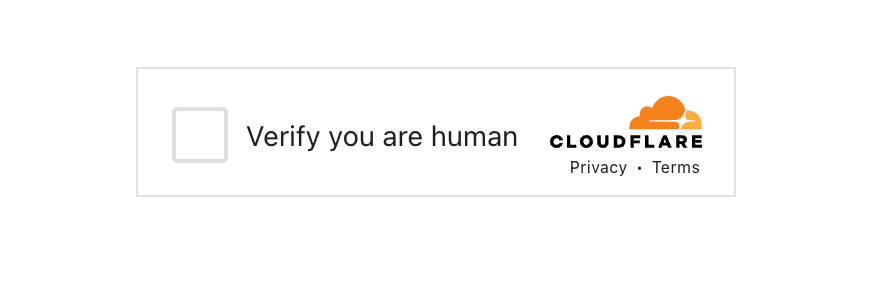Introduction
CAPTCHA has been a standardized method to differentiate between human users and bots on websites. However, traditional CAPTCHA methods often disrupt user experience (UX), leading to frustration and abandonment.
In this blog post, we will explore how to implement invisible CAPTCHA solutions that enhance UX while maintaining security.
The Problem with Traditional CAPTCHA
Google reCAPTCHA is currently one of the most widely used CAPTCHA services, but it also comes with one of the most disruptive user experiences. Users are often required to solve puzzles, identify images, or type distorted text, which can be time-consuming and frustrating.
 Source: https://developers.nopecha.com/recognition/recaptcha/
Source: https://developers.nopecha.com/recognition/recaptcha/
Another similarly disruptive CAPTCHA is hCaptcha, commonly seen in Discord, which also requires user interaction to verify they are human.
 Source: https://developers.nopecha.com/token/hcaptcha/
Source: https://developers.nopecha.com/token/hcaptcha/
Some websites use proprietary CAPTCHA systems, but these often suffer from the same issues as Google reCAPTCHA and hCaptcha — or even worse.
 Source: Chang et al., Journal of Information Security and Applications, 2024. https://doi.org/10.1016/j.jisa.2024.103711
Source: Chang et al., Journal of Information Security and Applications, 2024. https://doi.org/10.1016/j.jisa.2024.103711
Cloudflare Turnstile tries to address this by offering a less intrusive experience, verifying automatically without user interaction. However, it sometimes still requires users to click a checkbox, which can still be a minor disruption.
 Source: https://blog.cloudflare.com/turnstile-ga/
Source: https://blog.cloudflare.com/turnstile-ga/
Vercel BotID
On June 25, 2025, Vercel released BotID — an invisible CAPTCHA solution that protects your application without visible challenges in typical usage.
How It Works
BotID takes a fundamentally different approach:
- Silent Detection: Collects thousands of signals to distinguish humans from bots without user interaction
- Dynamic Protection: Changes detection methods on every page load to prevent reverse engineering
- Machine Learning: Streams attack data into a global ML system that strengthens protection for all users
BotID has two operational modes:
- Basic Mode is a lightweight, Vercel-hosted check that validates browser sessions with minimal processing.
- Deep Analysis is an optional, stronger check (used when you explicitly call
checkBotId()with Deep Analysis enabled) and is powered by Kasada's advanced detection engine. This means not all BotID traffic is routed to Kasada — only Deep Analysis calls are (and those calls may be billed).
The best part? Your users never know it's there.
Getting Started with BotID
Let's walk through setting up BotID in a Next.js App Router project. For this example, we'll protect a newsletter signup endpoint.
BotID also supports other frameworks like SvelteKit, Nuxt, and others. Check the official documentation for more details.
Step 1: Installation
# Install the BotID package
pnpm install botidStep 2: Configure Next.js
import { withBotId } from 'botid/next/config';
const nextConfig = {
// Your existing config
};
export default withBotId(nextConfig);Step 3: Add Client Protection
import { initBotId } from 'botid/client/core';
initBotId({
protect: [
{
path: '/api/newsletter',
method: 'POST',
},
{
path: '/api/contact',
method: 'POST',
},
],
});Step 4: Verify on the Server
import { NextRequest, NextResponse } from 'next/server';
import { checkBotId } from 'botid/server';
export async function POST(request: NextRequest) {
const verification = await checkBotId();
if (verification.isBot) {
return NextResponse.json({ error: 'Bot detected' }, { status: 403 });
}
// Process legitimate signup
const { email } = await request.json();
await saveToNewsletter(email);
return NextResponse.json({ success: true });
}Server Actions Support
BotID also works seamlessly with Next.js Server Actions:
'use server';
import { checkBotId } from 'botid/server';
export async function submitFeedback(formData: FormData) {
const verification = await checkBotId();
if (verification.isBot) {
throw new Error('Access denied');
}
// Process feedback
const feedback = formData.get('feedback') as string;
await saveFeedback(feedback);
return { success: true };
}Handling Verified Bots
Not all bots are bad. BotID can identify verified bots like ChatGPT Operator, allowing you to permit certain AI assistants while blocking malicious ones:
export async function GET(request: NextRequest) {
const { isBot, isVerifiedBot, verifiedBotName } = await checkBotId();
// Allow ChatGPT Operator but block other bots
if (isBot && !(isVerifiedBot && verifiedBotName === 'chatgpt-operator')) {
return NextResponse.json({ error: 'Access denied' }, { status: 403 });
}
// Return data
return NextResponse.json({ data: await fetchPublicData() });
}Development Mode
During local development, BotID automatically returns isBot: false to avoid disrupting your workflow. You can test bot detection logic using development options:
// Testing bot detection in development
const verification = await checkBotId({
developmentOptions: {
bypass: 'BAD-BOT', // Simulate bot detection
},
});Pricing
BotID offers two modes:
- Basic Mode: Free on all plans — validates browser sessions
- Deep Analysis: $1 per 1,000 calls (Pro/Enterprise) — advanced detection with thousands of signals
You're only charged when calling checkBotId() with Deep Analysis enabled. Passive page views don't incur charges.
Real-World Use Cases
BotID shines for protecting:
- Checkout flows: Prevent inventory hoarding by bots
- API endpoints: Stop automated scraping and abuse
- AI chat interfaces: Protect expensive LLM-powered features
- Sign-up forms: Block fake account creation
- Contact forms: Eliminate spam submissions
Conclusion
While the idea of invisible CAPTCHA isn't new1, Vercel BotID makes it accessible and easy to implement. By integrating BotID into your application, you can significantly enhance user experience while maintaining robust security against bots.
For detailed documentation and advanced configurations, visit the Vercel BotID documentation.
1 Gooding, Sarah (March 9, 2017). "Google Launches Invisible reCAPTCHA". WP Tavern.


